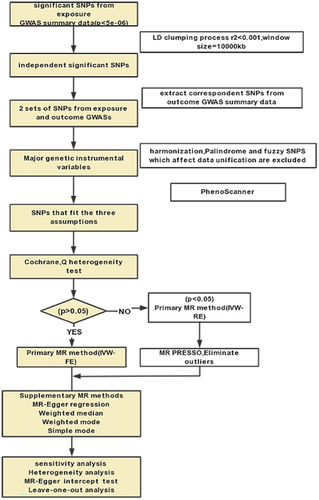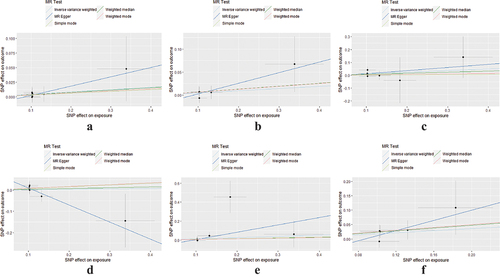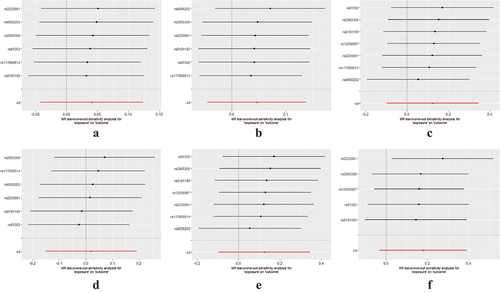Figures & data
Figure 1. Flowchart of the overall design of the Mendelian randomisation analysis. SNP, single nucleotide polymorphisms.

Figure 2. Overview of the study design and hypotheses for the MR design. Hypothesis 1 suggests that the selected instrumental variables (IVs) for genetic variation are significantly associated with the exposure of interest (HZ); hypothesis 2 suggests that the instrumental IVs for genetic variation are not associated with potential confounders; and hypothesis 3 suggests that genetic variation affects the risk of outcome only through the exposure (HZ), and not through other pathways.

Table 1. Detailed characterisation of GWAS data.
Figure 3. Scatterplot of the genetic association of HZ with stroke and its subtypes. (a) total stroke; (b) ischaemic stroke; (c) large artery stroke; (d) cardioembolic stroke; (e) small vessel stroke; and (f) lacunar stroke. The slope of the straight line indicates the magnitude of causality. Abbreviations: HZ, herpes zoster; SNP, single nucleotide polymorphism; MR, Mendelian randomization.

Figure 4. Forest plot for leave-one-out analysis of genetic associations between HZ and stroke and its subtypes. (a) total stroke; (b) ischaemic stroke; (c) large artery stroke; (d) cardioembolic stroke; (e) small vessel stroke; and (f) lacunar stroke. Bars indicate CI. Abbreviations: HZ, herpes zoster; CI, confidence interval.

Table 2. Causal association of HZ on stroke and its subtypes assessed by 5 MR analysis methods.
Table 3. Sensitivity analysis of genetically predicted HZ to stroke detailed characterisation of GWAS data.
Supplemental Material
Download MS Word (32 KB)Data availability statement
Making data available in publicly accessible repositories.
The data provided in this study are publicly available in the FinnGen Consortium [https://www.finngen.fi/en], the MEGASTROKE Consortium, and the IEU OpenGWAS database [https://gwas.mrcieu.ac.uk/].
